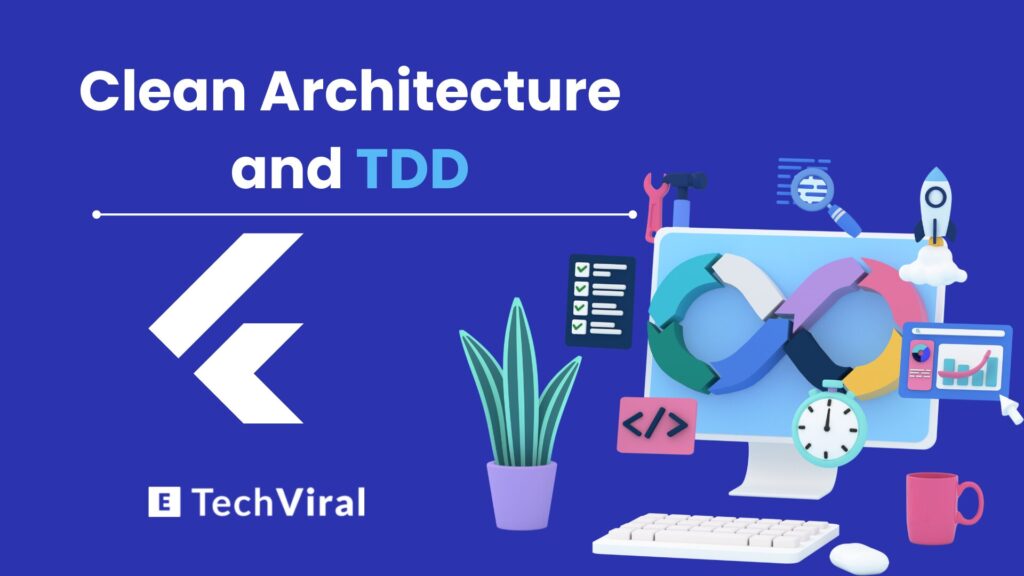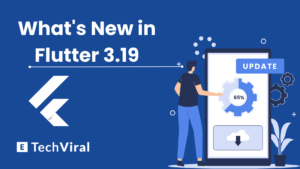In the ever-evolving world of software development, two concepts stand out for creating robust, maintainable, and high-quality applications, Clean Architecture and TDD (Test-Driven Development). Clean Architecture is a design philosophy that emphasizes separating the elements of a system to make it easier to understand, develop, and maintain.
Meanwhile, TDD is a software development approach where tests are written before the code itself, ensuring that software is built with testing in mind from the ground up. Combining Clean Architecture with TDD not only accelerates the development process but also enhances code quality, making it a pivotal strategy for modern software teams.
This duo ensures that applications are not just built to last but are also designed with the future in mind, accommodating changes and new technologies seamlessly. As we dive deeper, we’ll uncover how these methodologies can be applied effectively, even in areas as dynamic and detail-oriented as pickleball technology, offering insights that cater to both beginners and seasoned players looking to understand the technical side of their passion.
The Fundamentals of Clean Architecture
Clean architecture in Flutter is a concept in software design that aims to make systems more manageable, flexible, and testable. At its core, clean architecture focuses on separating the concerns of a system, ensuring that business logic is not tightly coupled to the user interface, database, or any other external agency. This separation allows for easier maintenance and scalability, as changes in one area of the system do not heavily impact others. The role of clean architecture in software design is pivotal; it guides developers in structuring their code in such a way that it enhances the system’s durability against changing technological landscapes and business requirements.
Core Components of Clean Architecture
Clean architecture is built around several key components, each serving a distinct purpose in the software development process:
- Entities: These are the business objects of your application, representing the core functionality and rules that are unlikely to change over time, regardless of external changes in the application’s interface, database, or other areas.
- Use Cases: This layer encapsulates and implements all of the application’s business rules specific to each use case of the system (e.g., creating a new user account or processing a payment).
- Interface Adapters: This layer acts as a bridge between the outer layers (like the UI or database) and the inner layers (entities and use cases). It translates data between the formats most convenient for each side.
- Frameworks and Drivers: The outermost layer of the architecture, which is composed of tools and frameworks chosen to present the application to the outside world, such as the Web framework, database, or any other external agency.
The Dependency Rule
The Dependency Rule is a crucial principle within clean architecture that dictates how the different layers of an application should interact. It states that dependencies should only point inwards, meaning that inner layers (like Entities and Use Cases) should not depend on outer layers (like Interface Adapters and Frameworks). This rule ensures that the core business logic of the application remains independent of external concerns, making the system more resilient to changes in external frameworks or databases. By adhering to the Dependency Rule, developers can create systems that are easier to test, understand, and maintain over time.
What is TDD?
Test-Driven Development (TDD) is a software development approach where tests are written before the actual code. The core principle of TDD is to write a small amount of test code for a specific functionality before implementing it. This approach ensures that development is focused and that every piece of code has a corresponding test case from the outset. TDD encourages simple designs and inspires confidence in the software’s functionality, as developers write code that is necessary to pass the tests, no more, no less.
The TDD Cycle: Red, Green, Refactor
The TDD process follows a simple, iterative cycle known as “Red, Green, Refactor”:
- Red: Write a test for the next bit of functionality you want to add. The test should fail because the functionality hasn’t been implemented yet. This red phase highlights what needs to be developed.
- Green: Write the minimal amount of code necessary to make the test pass. This step focuses on functionality, getting the code to work as quickly as possible.
- Refactor: Now that the test is passing, look at the code to see if there are any improvements you can make while keeping the test green. This could involve removing duplication, improving readability, or simplifying the design. This step ensures the code is well structured and maintainable.
Benefits of TDD in Software Development
TDD offers numerous benefits that contribute to the quality and maintainability of software, including:
- Code Quality: Since TDD involves writing tests before code, it encourages developers to consider the requirements and design before coding, leading to higher quality code that meets requirements more closely.
- Maintainability: TDD leads to a codebase that is cleaner and easier to understand because it encourages refactoring. With tests covering every part of the code, developers can make changes with confidence, knowing that they’ll catch any introduced errors immediately for error handling.
- Documentation: The tests written during TDD serve as a form of live documentation for the system. They clearly express the system’s behavior, making it easier for new developers to understand how the system works.
- Reduction in Bugs: By focusing on testing from the beginning, TDD can help uncover and fix bugs early in the development process, reducing the cost and effort required for bug fixes later on.
- Improved Design: The need to write testable code often leads to better software design choices, such as looser coupling and higher cohesion, making the system more flexible and easier to adapt to future changes.
How Clean Architecture Complements TDD
Clean Architecture and Test-Driven Development (TDD) are two methodologies that, when combined, significantly enhance both the design and testability of software. This synergy is not accidental but rather a result of their shared emphasis on separation of concerns, modularity, and iterative refinement.
Enhancing Testability Through Architectural Choices
Clean Architecture, with its strict layer separation and dependency rule, naturally facilitates a testable codebase. By isolating the core business logic (entities and use cases) from external concerns (UI, databases), it becomes much easier to write unit tests for the core functionality without worrying about external dependencies. This isolation aligns perfectly with the TDD philosophy of testing small units of code in isolation. Moreover, the dependency inversion principle, a key component of Clean Architecture, allows for the use of interfaces or abstract classes that can be mocked or stubbed out during testing, further enhancing testability.
Design Benefits of TDD for Clean Architecture
TDD also contributes significantly to the architectural design of a system. By writing tests first, developers are forced to think through the design of their system before implementing it. This leads to cleaner, more modular code, as developers are encouraged to write just enough code to pass the test, adhering to the YAGNI (You Ain’t Gonna Need It) principle. This minimalist approach fits well with Clean Architecture’s emphasis on separation of concerns, as it results in a system where components are loosely coupled and highly cohesive.
Practical Implementation of Clean Architecture and TDD
Implementing Clean Architecture and TDD in a project involves a series of steps that focus on building a solid foundation of testable, well-architected code. Below is a simplified guide on integrating both practices in a project using Dart, a popular choice for cross-platform development.
Step 1: Define Entities and Use Cases
Start by defining the core entities of your application. These are the high-level business objects that your application will manage. Then, define the use cases that operate on these entities. Use cases should encapsulate all the business rules and logic.
Step 2: Set Up the Project Structure
Organize your Dart project into layers as prescribed by Clean Architecture:
- Entities: Place your business objects here.
- Use Cases: Business logic lives here.
- Interface Adapters: This layer will contain your data repositories, web services, and any other adapters needed to convert data from the format most convenient for the use cases and entities to the format most convenient for some external agency, such as a database or a web service.
- Frameworks and Drivers: The outermost layer, including your UI and external data sources.
Step 3: Implement TDD
For each use case, start by writing tests. In Dart, you can use the test package to write unit tests.
// Example Test for a Use Case
import 'package:test/test.dart';
import 'package:my_project/use_cases/my_use_case.dart';
void main() {
group('MyUseCase', () {
test('should perform expected operation', () {
// Setup your test and mock dependencies
final useCase = MyUseCase();
// Define the expected outcome
final expectedOutcome = true;
// Execute the use case
final result = useCase.execute();
// Verify the outcome
expect(result, expectedOutcome);
});
});
}
Step 4: Write the Implementation to Pass the Test
After writing your test and seeing it fail (Red phase), write the minimal amount of code necessary to make the test pass (Green phase).
// Use Case Implementation Example
class MyUseCase {
bool execute() {
// Implementation logic to pass the test
return true;
}
}
Step 5: Refactor
Once your tests pass, refactor both your tests and your implementation to improve readability, maintainability, and performance without changing the behavior.
Common Challenges and Solutions
Implementing Clean Architecture and TDD in software development projects can significantly improve code quality and maintainability. However, developers often face several challenges when trying to adopt these methodologies. Understanding these challenges and knowing how to address them is crucial for successful implementation.
Overcoming Initial Complexity
One of the primary challenges is the perceived initial complexity of setting up Clean Architecture and starting with TDD. Clean Architecture requires a thoughtful organization of code into layers and adherence to the Dependency Rule, which can seem daunting at first.
Solution: Start small and iterate. Begin by applying the principles of Clean Architecture and TDD to a small, manageable component of your project. As you become more comfortable with the approach, gradually expand its application across the project.
Balancing Flexibility and Structure
Another challenge is maintaining the balance between flexibility and the rigid structure imposed by Clean Architecture. Developers might find it difficult to decide how strictly to adhere to architectural guidelines, especially in smaller projects where the overhead might seem unnecessary.
Solution: Tailor Clean Architecture to your project’s specific needs. Not every project will require the same level of architectural complexity. Adjust the granularity of components and layers based on the project size and team expertise.
Keeping Up with Changing Requirements
Adapting to changing requirements while maintaining a clean architecture and a suite of tests can be challenging. Changes in business logic may require significant changes in the underlying code and tests, leading to potential delays.
Solution: Embrace refactoring as part of the development process. Clean Architecture, by design, makes your code more adaptable to change. TDD ensures that your changes do not break existing functionality. Regular refactoring sessions can help keep the codebase flexible and maintainable.
Best Practices for Effective Implementation
To maximize the benefits of Clean Architecture and TDD, developers should adhere to a set of best practices.
Start with a Clear Understanding
Ensure that all team members have a solid understanding of Clean Architecture and TDD principles. Training sessions, workshops, and collaborative code reviews can help disseminate knowledge and best practices across the team.
Automate Where Possible
Leverage automation tools for testing and code quality checks. Continuous integration (CI) systems can automatically run tests and report on code coverage, helping to maintain high code quality standards.
Foster a Culture of Testing
Cultivate a culture that values testing and recognizes its role in producing high-quality software. Encourage developers to write tests for every new feature or bug fix, and make test-driven development a core part of your development process.
Emphasize Continuous Learning
Stay open to new ideas and continuously seek ways to improve your implementation of Clean Architecture and TDD. The software development landscape is always evolving, and staying informed about best practices and new tools can help you refine your approach.
Refactor Regularly
Make refactoring a regular part of your development cycle. Clean Architecture facilitates this by decoupling components, making it easier to modify and improve the system without widespread impacts.
Essential Tools for Implementing Clean Architecture and TDD
Implementing Clean Architecture and Test-Driven Development (TDD) effectively requires a toolkit that supports these methodologies’ principles and processes. This toolkit can include a variety of software and frameworks designed to facilitate the development, testing, and maintenance of clean, well-architected code.
Overview of Software and Frameworks
- Version Control Systems (VCS): Tools like Git are essential for managing changes and facilitating collaboration within teams practicing TDD. They allow developers to work on different features simultaneously without interference and make it easier to revert back to previous states if something goes wrong.
- Integrated Development Environments (IDEs): IDEs such as Visual Studio Code, IntelliJ IDEA, and Android Studio provide powerful features for writing, testing, and refactoring code. They offer integrated support for version control, debugging, and task management, which is crucial for TDD and maintaining clean architecture.
- Testing Frameworks: Depending on the programming language used, selecting the right testing framework is crucial. For instance, JUnit and Mockito are popular in the Java ecosystem, pytest and unittest for Python, and xUnit for .NET. Dart developers might use the built-in test package for unit testing and mockito for mocking dependencies.
- Dependency Injection (DI) Frameworks: DI is a core principle of clean architecture, helping to decouple the code’s components. Frameworks like Dagger (for Java and Android), Guice, and Spring in the Java ecosystem, or Koin and Kodein in Kotlin, facilitate this process. For Dart and Flutter, packages like provider and get_it can be used.
- Continuous Integration/Continuous Deployment (CI/CD) Tools: CI/CD tools like Jenkins, CircleCI, Travis CI, and GitHub Actions automate the testing and deployment processes, ensuring that code is reliably tested and deployed, which is essential for maintaining high-quality codebases with TDD.
Choosing the Right Tools for Your Project
The selection of tools should be guided by several criteria to ensure they align well with your project’s needs:
- Language and Platform Compatibility: Choose tools that are compatible with the programming languages and platforms your project uses. This ensures smooth integration and efficiency in your development process.
- Community and Support: Tools with a large and active community, as well as official support channels, are generally more reliable. They offer extensive documentation, tutorials, and forums where you can seek help and advice.
- Scalability and Performance: Consider whether the tools can scale with your project as it grows. They should be able to handle increasing codebases and team sizes without significant drops in performance.
- Ease of Integration: Tools that integrate easily with your existing workflow and other tools (e.g., your IDE, VCS, and CI/CD pipeline) can save time and reduce complexity.
- Feature Set: Evaluate whether the tools offer the features you need for TDD and clean architecture, such as test management, mocking capabilities, dependency injection, and refactoring support.
Evolving Trends in Software Development
The landscape of software development is constantly changing, driven by new technologies, methodologies, and the evolving needs of users. Clean Architecture and Test-Driven Development (TDD) are robust methodologies that have proven their value over time. However, they too are adapting to fit into the modern development ecosystem. Understanding these adaptations is key to staying relevant and competitive in the field.
How Clean Architecture and TDD are Adapting to New Technologies
Microservices and Cloud-Native Applications
Clean Architecture aligns well with the microservices architecture, where each service is developed, deployed, and managed independently. This modular approach enhances the scalability and maintainability of applications, especially when combined with cloud-native technologies. TDD facilitates the development of microservices by ensuring that each service is thoroughly tested and functions as expected, reducing the complexity of testing in distributed systems.
DevOps and Continuous Integration/Continuous Deployment (CI/CD)
The principles of TDD naturally complement DevOps practices, particularly CI/CD pipelines. Automated testing is a cornerstone of CI/CD, enabling frequent code integration and ensuring the reliability of software releases. Clean Architecture, with its emphasis on separation of concerns, makes it easier to deploy, test, and manage applications across different environments and platforms.
Containerization and Orchestration Tools
Technologies like Docker and Kubernetes have revolutionized the way applications are containerized and orchestrated. Clean Architecture helps in creating loosely coupled systems that can be easily containerized. TDD ensures that each part of the application behaves as expected, facilitating smoother deployment and scaling within containerized environments.
Artificial Intelligence and Machine Learning
As AI and ML become more integrated into software applications, the principles of Clean Architecture and TDD are being applied to ensure that AI models are well-integrated, maintainable, and reliable. TDD can be used to test the integration points and data pipelines feeding into AI models, while Clean Architecture can help isolate the AI components, making them interchangeable and easier to update as models evolve
Conclusion
our exploration of clean architecture and TDD, it’s clear these methodologies aren’t just fleeting trends but foundational practices that are evolving with new technologies. As software development continues to advance, the principles of clean architecture and TDD remain pivotal, guiding developers towards creating more reliable, scalable, and maintainable applications. Staying informed and adaptable is key, so developers should focus on honing their skills in these areas. Embracing clean architecture and TDD not only prepares us for the future of software development but also ensures that we’re building systems that stand the test of time. Keep coding smartly and stay curious!
FAQ’s
What is Clean Architecture?
Clean architecture is a software design philosophy that focuses on separating concerns within an application. It’s all about organizing code in such a way that it enhances maintainability, scalability, and testability. By dividing an application into layers with specific responsibilities and ensuring that dependencies flow inwards, clean architecture helps keep the core business logic independent of frameworks and external interfaces. This approach not only makes your code cleaner but also easier to manage and evolve over time.
How does Test-Driven Development (TDD) work?
Test-Driven Development, or TDD, is a practice where you write tests for your functions before you even write the code to implement those functions. It’s like setting up little challenges for yourself that your code needs to pass. You start by writing a test that fails (because the functionality isn’t there yet), then write the minimum amount of code needed to pass the test, and finally refactor the code to meet your standards of cleanliness and efficiency. It’s a cycle of red (fail), green (pass), and refactor that leads to high-quality, well-tested code.
Why combine Clean Architecture with TDD?
Combining Clean Architecture with TDD is like giving your software development process a double layer of precision and quality. Clean Architecture structures your code in a way that makes it easy to test, while TDD ensures that every piece of code is tested before it’s fully integrated. This combination leads to software that’s not just well-designed but also robust and reliable, minimizing bugs and making future changes easier to implement. It’s a proactive approach to software development that saves time and headaches down the line.
What skills do developers need for Clean Architecture and TDD?
To master Clean Architecture and TDD, developers should focus on learning solid principles of software design, such as understanding how to effectively separate concerns and manage dependencies in their code. Proficiency in writing unit tests and familiarity with testing frameworks specific to their programming language are also crucial. Additionally, developers should cultivate an adaptive mindset that’s open to refactoring and improving code continuously. Good communication skills are essential too, as these practices often involve close collaboration within a team.
How are Clean Architecture and TDD evolving with new technologies?
As new technologies emerge, Clean Architecture and TDD are adapting by incorporating more automation and tooling support, making these practices more integrated and streamlined. With the rise of cloud-native applications, microservices, and containerization, these methodologies are evolving to address the complexities of distributed systems. Moreover, the growing emphasis on DevOps and continuous integration/continuous deployment (CI/CD) pipelines is pushing Clean Architecture and TDD towards more collaborative and automated workflows, ensuring that software quality remains a top priority in the fast-paced development environments of today.











